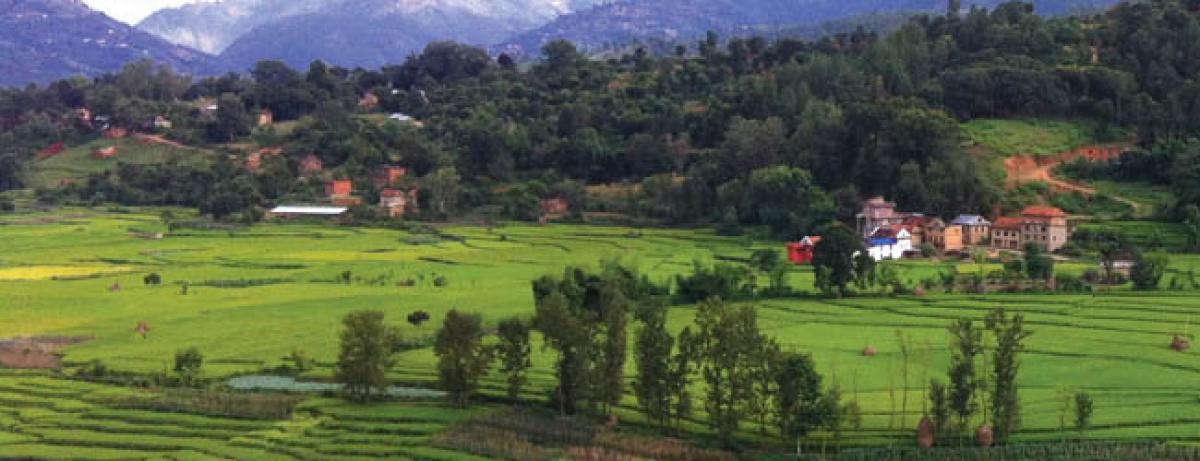Live
- Sri Lanka concludes sovereign bond restructuring
- Lal Krishna Advani hospitalised at Delhi's Apollo Hospital
- Modi performs puja at Triveni
- Jammu records season’s lowest minimum temperature as Kashmir valley shivers
- Scheme to give Rs 1K to women to be rolled out in 15 days
- Flirty Texts That Turn into Dates
- ‘Asli’ Sonakshi shares a glimpse of herself in ‘golden hour’
- Shraddha Kapoor took ‘thepla’ for her ‘foreign’ trip
- ChatGPT Now Supports Video Inputs: All Details
- B.Com vs BBA: Which degree better prepares you for an MBA?
Just In

Illegal wildlife trade and habitat fragmentation that has increased human-wildlife conflict are threatening the wildlife across the Hindu Kush Himalayan region, an international expert has said.
New Delhi: Illegal wildlife trade and habitat fragmentation that has increased human-wildlife conflict are threatening the wildlife across the Hindu Kush Himalayan region, an international expert has said.
He said there is need for trans-boundary interventions to combat the challenges in wildlife conservation.
There is a vast array of wildlife products like food, wool and fur, leather goods and medicines that are part of an illegal trade across borders in the Hindu Kush, which has the potential to drive species to extinction, Rajan Kotru, Regional Programme Manager for Trans-Boundary Landscapes with the Kathmandu-based International Centre for Integrated Mountain Development (ICIMOD), told IANS in an email.
In a write-up titled "Sustaining our Wildlife", he said snow leopard skins and tiger bones are frequently seized from smugglers and poachers crossing the borders.
This year's theme of World Environment Day on Sunday is 'Go wild for life'.
"One of the problems with controlling the illicit trade is the disconnect between global environmental agreements such as the Convention on International Trade in Endangered Species of Wild Flora and Fauna (CITES) and national laws and implementation capacity," Kotru said.
Citing TRAFFIC, the wildlife trade monitoring network, he said the estimated value of global imports of legal wildlife products annually increased more than twofold in 2009, from $160 billion to $323 billion.
Painting a positive picture too, Kotru said more than two decades after the Earth Summit, there has been some progress in wildlife conservation.
In Nepal, he said, there is two years of 'zero poaching' of rhinos, an inspirational feat.
Similarly, there has been an increase in the number of tigers in India and recovery of the population of Tibetan Antelope in China, which were nearly extinct.
According to Kotru, this proves that political will, combined with targeting poachers, sharing good practices and raising awareness, particularly among youth, can help local communities and conservation agencies to work together to sustain wildlife populations.
In the Hindu Kush, a mountain range extending west of the Himalayas, several ecosystems and the interfaces between them have been degraded and habitat fragmentation is common, said the researcher.
Habitat fragmentation has increased human-wildlife conflict in the Hindu Kush and the resulting crop losses and human casualties are leading to indifference and even resistance to wildlife conservation among rural populations, said the article.
Another concern, it said, is the expansion of rural and urban development, which is threatening existing bio-corridors.
"We can no longer ignore the climate change impacts, which are threatening the habitat and the water security of the wild animals, and much be prepared for the possibility of socio-demographic changes, which may weaken local institutions and community conservation practices," Kotru said.
"We need the right kind of interventions to be implemented on a larger, trans-boundary scale, with long-term consensus-oriented planning, implementation and monitoring that involves the local people," he added.
The article says the landscape approach tested in the Terai Arc Landscape in Nepal and the Kailash Sacred Landscape in China, India and Nepal and the Human Wildlife Safe System Approach being tested in Bhutan could change the way that the authorities approach wildlife conservation.

© 2024 Hyderabad Media House Limited/The Hans India. All rights reserved. Powered by hocalwire.com







